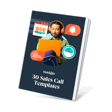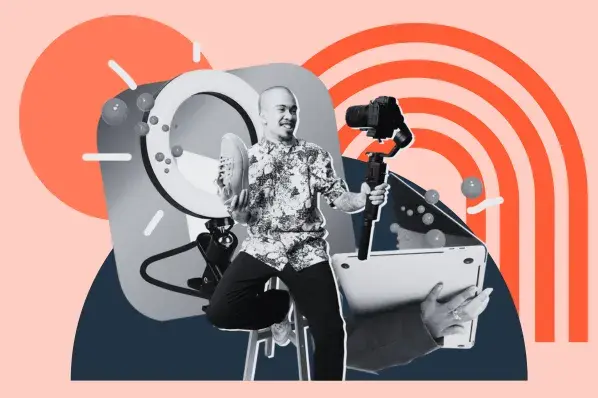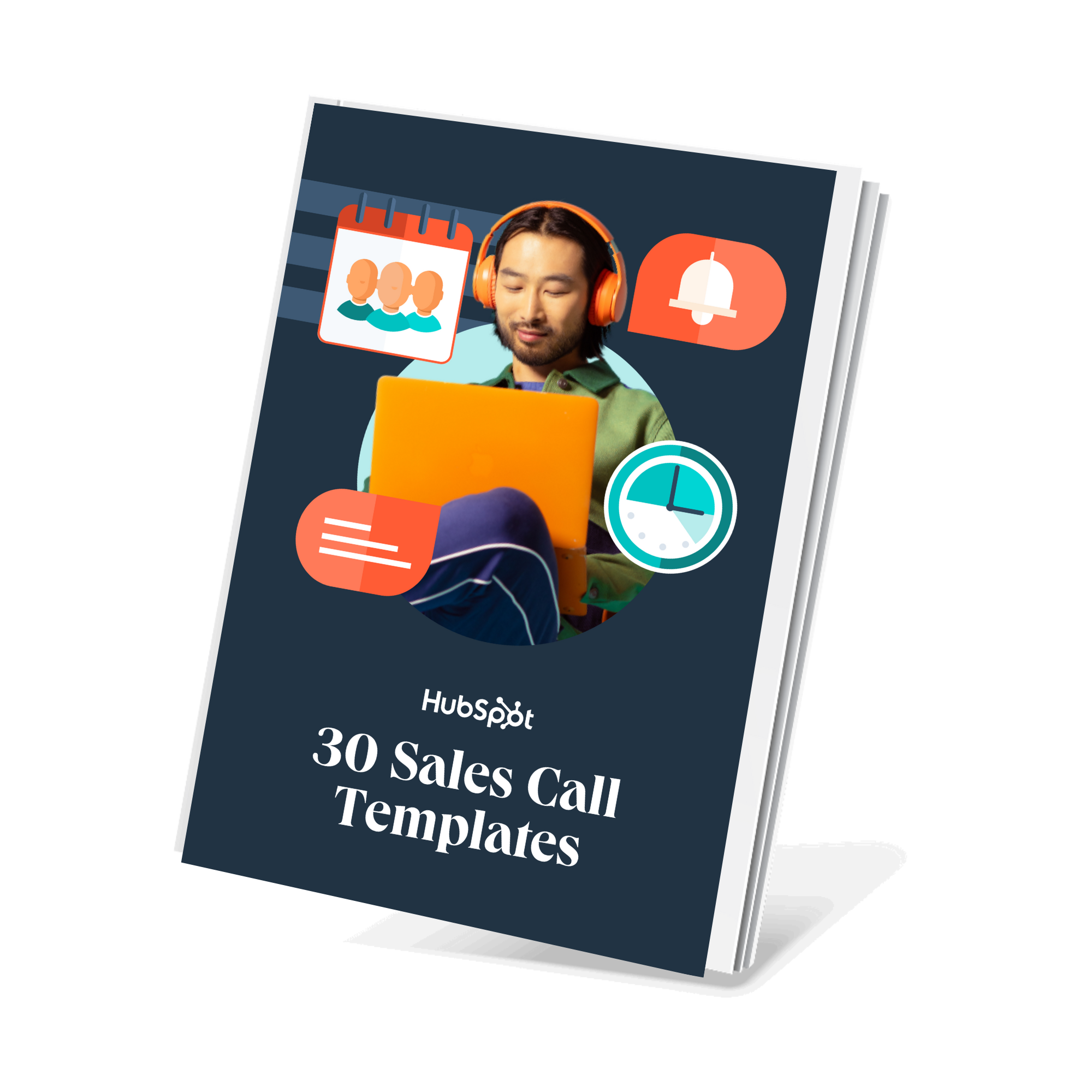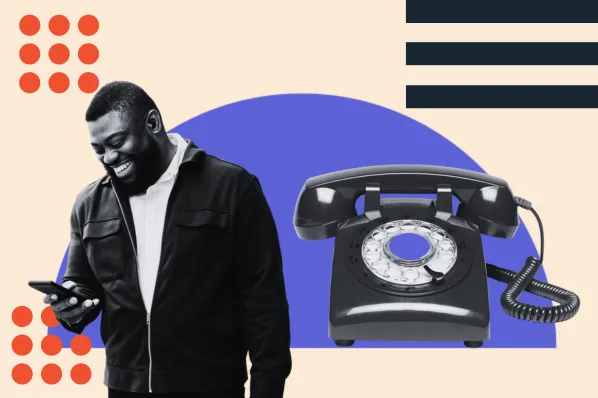I‘ve learned the hard way that poor video quality can cost you clients. But it’s not just about a stable internet connection — selling on video is an art form.
Whether you‘re a seasoned sales pro or a remote worker like me, mastering video selling is crucial. In this article, I’ll share my top tips for nailing both pre-recorded videos and live virtual sales calls.
Table of Contents
- What Is Video Selling?
- When to Use Pre-Recorded Video
- How to Sell on Live Video
- 5 Tools for Video Selling
- How I Make My Own Sales Videos
What Is Video Selling?
The use of pre-recorded and live video elements to engage with prospects in place of other communication methods during the sales process.
Video selling is crucial because it adds a more personal element to your communication and helps you create a deeper connection with your buyer. Jill Fratianne, head of corporate sales west for HubSpot, says, “Video email is the best email. You can’t hear sincerity in a written email – there’s no emotion in a written email no matter how well you write it.”
She continues, “When connecting on video, your contact will hear sincerity in your voice and see it in your eyes if you have their best interest at heart.”
Brandon Kirsch, a sales manager at HubSpot, also considers video essential for working in sales. He says, “With folks working from home and being more accessible online than ever, consumers are far less likely to give their time away. Video allows you to humanize your outreach, and most importantly showcase your authentic self to earn that time from your prospect or client.”
As mentioned above, the two main types of video selling are pre-recorded and live video calls. Both can be impactful when done correctly. Now that you know what video selling is and why you should use it, let’s break down how to use both pre-recorded and live video throughout the sales process.
Plus, according to Proposify, 50% of those who used videos in their sales cycles last year improved their close rates, yet only 22% of proposals included videos. Interestingly, video proposals are more popular in some industries than others.
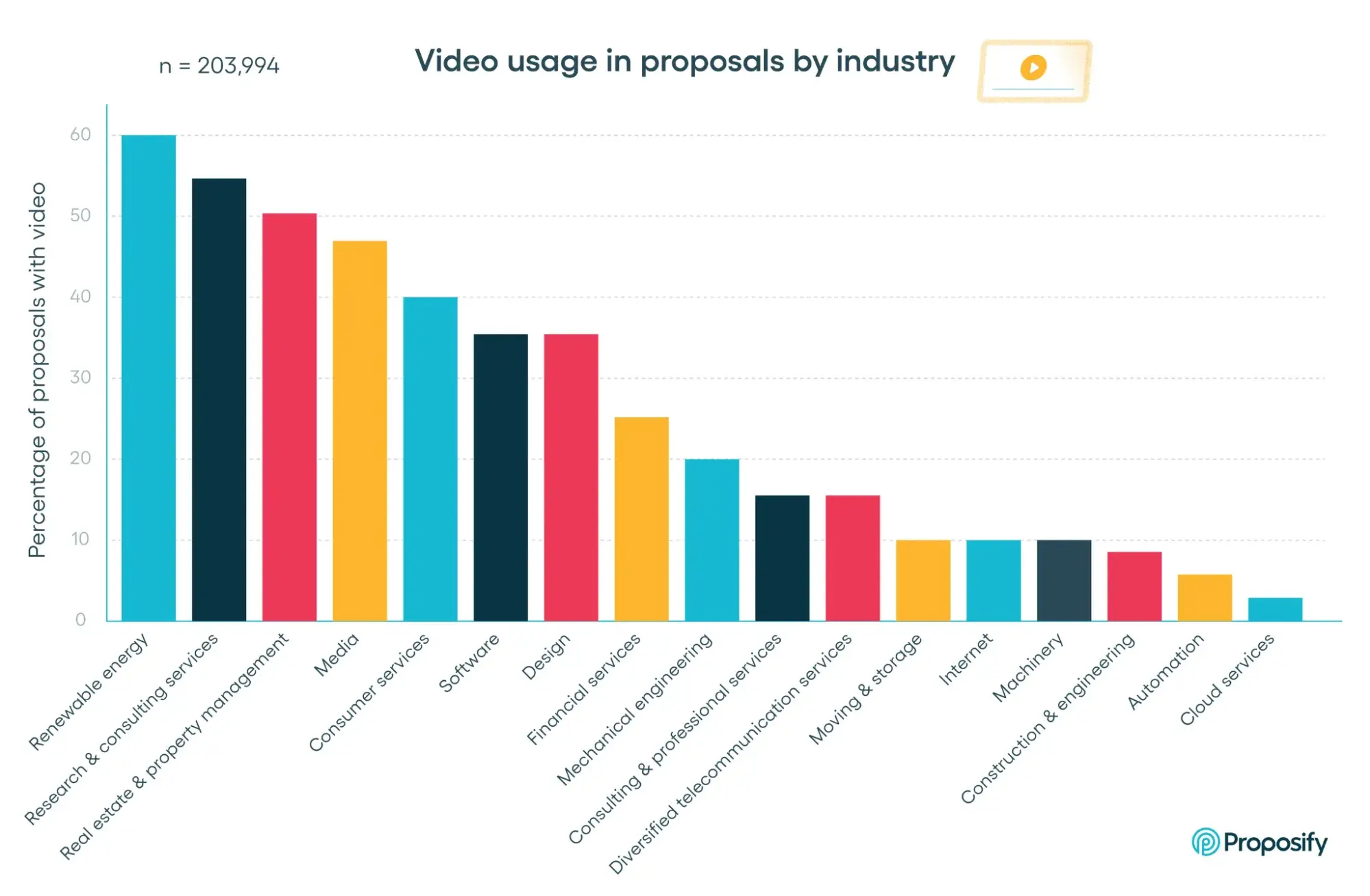
This shows there’s a huge gap for salespeople and freelancers to use video and gain a competitive edge.
When to Use Pre-Recorded Video
When I first started using video in my sales process, I felt pretty nervous. That's when I discovered the power of pre-recorded videos. Creating these videos before getting on live calls let me practice my pitch. It helped me ease into the process without the pressure of a real-time conversation. I could take my time, refine my message, and gradually build my confidence.
Now, I use pre-recorded videos extensively, especially when I‘m prospecting or reaching out to new contacts. It’s my go-to strategy for easing into video selling and making a great first impression.
I've also found that creating a video sales letter is super effective for complex products or services that need a deeper explanation. For example, I create these for my six-month-long strategy services.
Kirsch likes to connect with new contacts through pre-recorded video before scheduling a video call. During this stage, he emphasizes the importance of being yourself and establishing a genuine connection with potential buyers while prospecting to make future video calls smoother and more effective.
“With each video I send, my hope is to build familiarity with every second they watch so that when we enter the Zoom meeting room they feel like they already know me. Let your personality show and lean into your authentic self; like the old sales saying goes ‘people buy from people,’” he says.
Jacob Fernandes, SMB account executive at Agorapulse, stresses focusing on the prospect's needs from the start. He advises you to:
- Put the prospect in the spotlight when recording.
- Use their LinkedIn profile or public website to show your video is targeted to them.
Pre-Recorded Video Tactics
So you’ve decided to include a video in your initial sales email. Great! However, that isn’t an invitation to record a 10-minute rambling manifesto. Here’s what you need to keep in mind to nail your pre-recorded video.
1. Be concise.
According to Yaniv Siegel, the partnership team lead at Deel, 45-70 seconds is the ideal length for pre-recorded videos. He says, “Don’t make the video too short because that feels impersonal. However, if the video is too long, your prospect will tune out.”
Research backs up Siegel’s advice; a recent study found 58% of viewers will watch a video from a business if it’s around 60 seconds or less.
Plus, this length works in my experience too. Any shorter, and I risk coming across as impersonal. Any longer, and I lose my prospect's attention.
2. Don’t be too scripted.
In addition to keeping your videos concise, Siegel recommends not relying too heavily on scripts as sounding too rehearsed can compromise authenticity. “You don't need a script that you read line by line, but you should have a few bullet points that give you a structure so you know what to say in your video,” he says.
Fernandes also emphasizes the impact of custom content. He likes to follow this process:
"Find relevant information on their page to have a reason to reach out — such as checking out their newsletter or recent blog posts — and use this information to tie into your value proposition.
“Using the subject line ‘First name, I made this video for you’ increases the chances of them opening your email.
“Once you see that your prospect has viewed your video, use this information to pick up the phone and call them, since they are likely at their desk or near their phone if they just watched your video (make sure to give them five to 10 minutes before you call in case they are replying to your email)."
3. Do your research.
I‘ve learned the importance of building trust early in the sales process. In my initial video, I make sure to show that I’ve done my homework and am well-positioned to help solve my prospect's problems.
Kirsch likes to use the prospect’s company website as a backdrop while recording video messages to showcase familiarity. However, if the potential customer you’re working with doesn’t have a website, Kirsch recommends these other options:
"If the person you‘re hoping to chat with doesn’t have a website or may not value it you have other options. Research their social media channels and try beginning your video on their LinkedIn profile recognizing one of their job responsibilities or accolades.
“If they‘re from a certain part of the country, bring up a landmark or sports stadium to start your talk track off with something familiar. The key is humanizing your outreach by researching who they are or what their company does and showing that you’ve done it by starting the video off at a place they recognize."
Now that you know how to use pre-recorded video, let’s discuss how to get the most out of your live video calls.
How to Sell on Live Video
Tips for Selling on Zoom
Chances are you’re used to speaking on video with people you’re already comfortable with. Compared to these feelings of familiarity, hopping on video for a discovery call with a new contact can feel awkward. Let’s discuss how to feel more comfortable selling on live video calls.
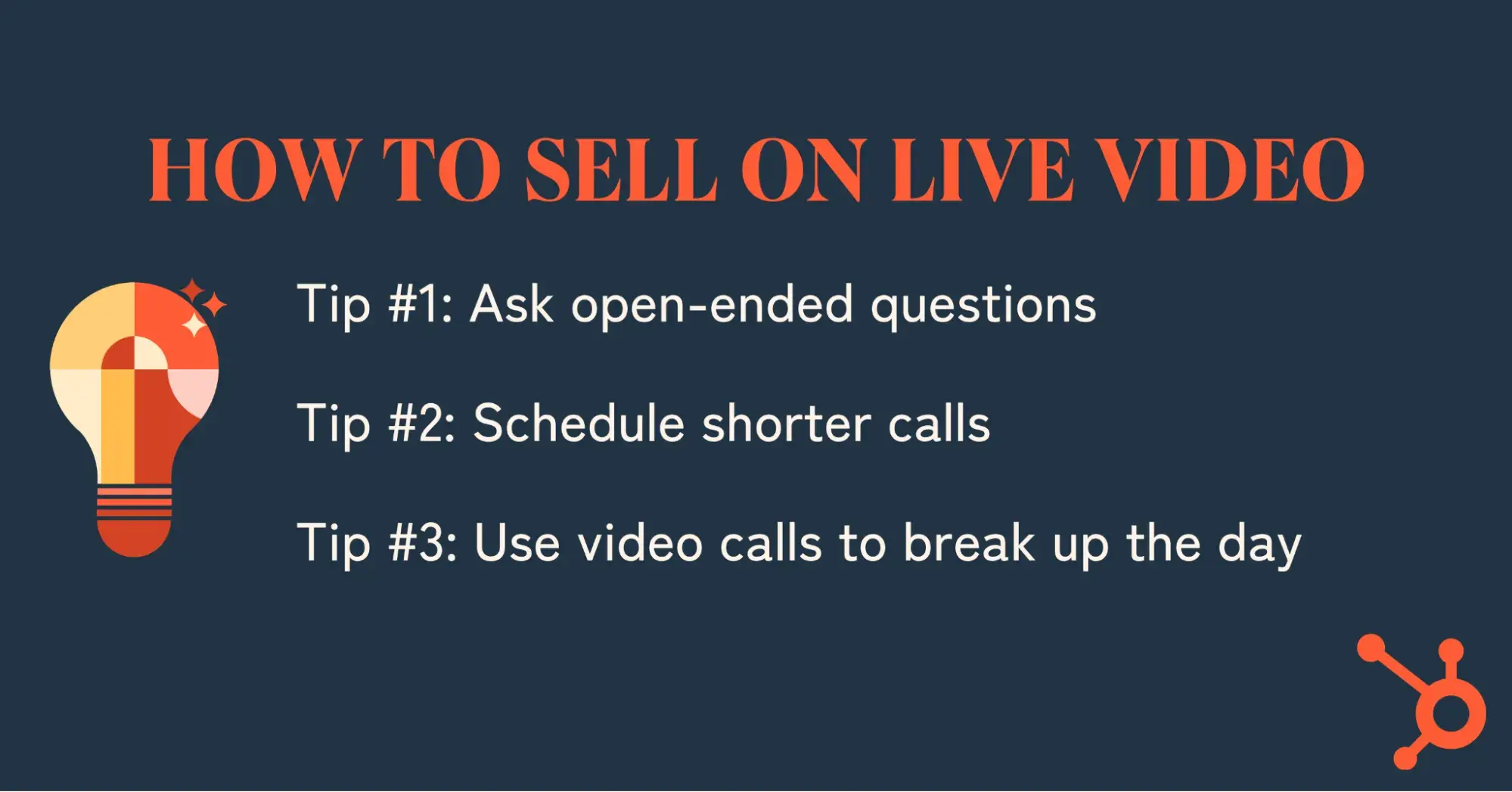
1. Ask open-ended questions.
During my first face-to-face interaction, I focused on asking thoughtful, open-ended questions. If I‘ve sent pre-recorded videos earlier, I know my prospect has had a chance to learn about me. Now, it’s my turn to understand them beyond my initial research.
I gain a solid understanding of their position and needs by asking thoughtful questions, actively listening, and showing genuine interest.
2. Schedule shorter calls.
I've changed my approach to call duration. If I used to ask for a 30-minute phone call, I now request a 10-minute video chat. For longer discussions, I aim for 15-20 minutes instead of an hour. Why? Because you want to use frequency more than length when selling on video.
When meeting in person, you can have a bigger impact on people by spending more time with them. But on video, your conversations should be replaced with shorter, more frequent interactions. The frequency of your appearance will have more of an impact when connecting remotely than how much time you spend talking to your contacts.
3. Use video calls to break up the day.
Part of what makes video so powerful for sales calls is the venue change phenomenon.
What does that mean? Let me explain.
In a traditional office setting, your day is filled with various location changes — from your desk to a conference room to a colleague's workspace. These changes help your brain catalog memories and information better.
However, when working from home, this natural venue change is lost. Many now spend their entire day in one spot, making it harder for the brain to process and retain information. This lack of change leads to stagnation and increased fatigue.
Video calls help combat this. By scheduling shorter, more frequent video calls throughout the day, you create artificial “venue changes” for both you and your prospects. These video moments anchor conversations at a higher level of importance because they‘re visually distinct from the rest of the day’s activities.
This approach breaks up the monotony of the workday for both you and the prospect and makes your conversations more memorable. That alone is a good reason to use video for your qualifying conversations.
Tips for Selling on Other Video Call Platforms
Though you will likely use video calling software for your live calls, it is important to maintain good video etiquette when creating and sharing your pre-recorded videos.
Keep these tips in mind when sharing videos.
- Track video performance. I‘ve learned that knowing when a potential buyer has opened my email or watched my video is crucial. By diving into the analytics of my sales videos, I’ve gained a solid understanding of what resonates with my prospects and what doesn't.
- Have an organized video library. I can‘t stress enough how much time and energy I’ve saved by keeping my videos well-organized. I categorize them based on the creation date and intended recipient. This system has been a lifesaver when I need to quickly find or recreate a video for a similar prospect.
- Turn static sales documents into video messages. Many video tools have features that allow you to quickly add unique visual elements to your videos. Hernandes says, “You can easily record yourself on camera and walk them through your proposals, quotes, and scope of work.” I've found this approach really elevates my standard document sharing.
5 Tools for Video Selling
Next, I’d like to share a few platforms specifically designed to support your video-selling efforts.
1. Clip Creator
HubSpot‘s Clip Creator is a free AI-powered video maker that converts text into professional videos for businesses. It’s a flexible tool that supports different content creation needs.
I've used its text-to-video conversion feature to quickly create product demos and educational content. The templates and branding options help keep my social media snippets and updates looking consistent.
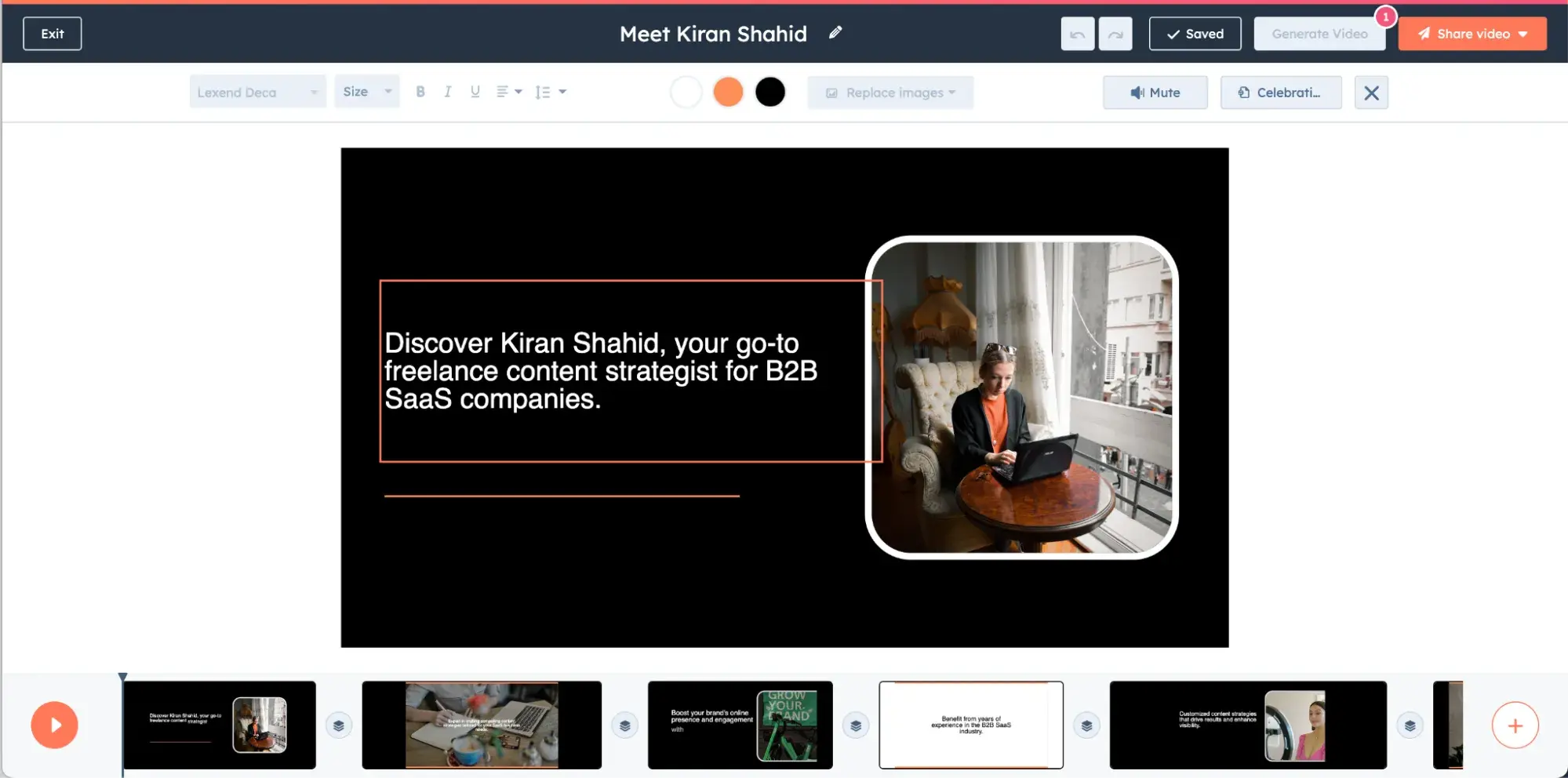
It‘s important to mention that Clip Creator doesn’t allow for personal recordings. While this limits its use for personal sales videos, I‘ve found it invaluable for creating polished, informative content that doesn’t require a personal touch. The auto-generated visuals save time, especially when I need to create quality content fast.
2. Hippo Video
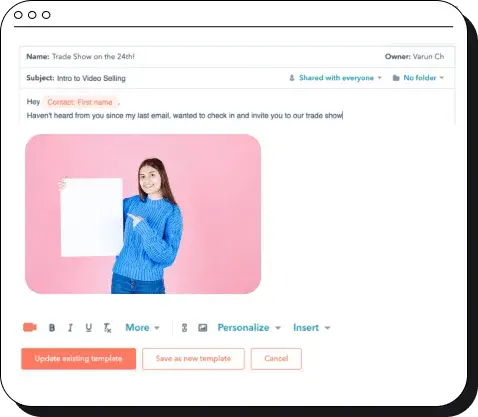
Hippo Video is a holistic video program that promotes engagement with your prospects, sales team, and marketing and service functions.
What I love about their video selling tools are the features designed to fit different stages of my sales process. I‘ve used their custom landing page builders and video teleprompter for more natural-sounding recordings. I’ve also dug into their advanced analytics to see how video performance impacts sales.
Hippo Video plans start at $20 per month per user with their annual sales plan.
3. Cincopa
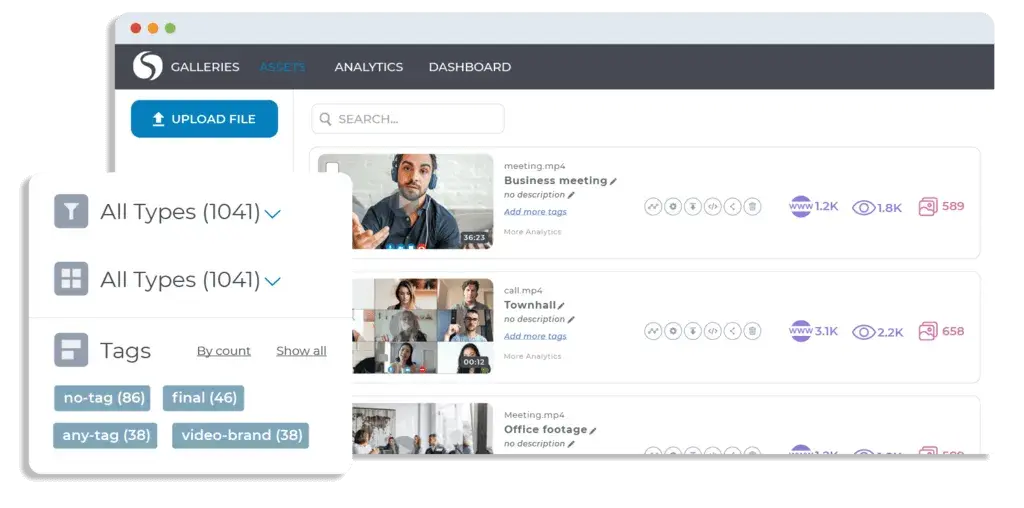
Cincopa is a video hosting service for Inbound-focused agencies. Their video sales tools have made it incredibly easy for me to create and send personalized sales videos with just a click. I also appreciate how I can create video libraries to share with my virtual assistant, which can be great for training and development.
Cincopa plans start at $25 per month when billed annually.
4. Vidyard
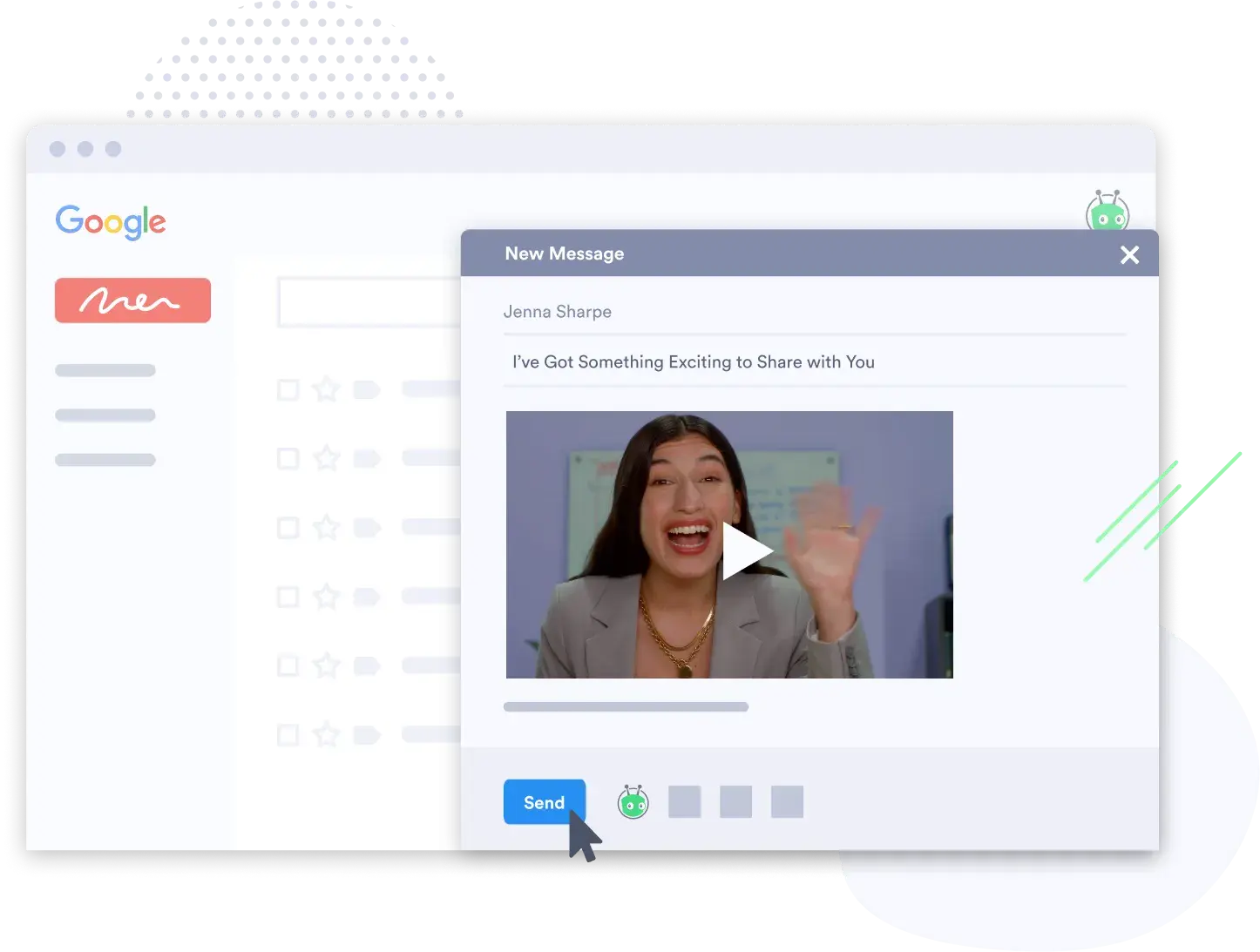
Vidyard is my go-to remote selling tool, and I can create and share engaging videos at every stage of the sales process. I love how I can record, edit, host, optimize, and share all within one platform — it's really simplified my workflow.
Vidyard offers a free plan with unlimited uploads and additional features in paid plans starting at $19 per month.
5. Dubb
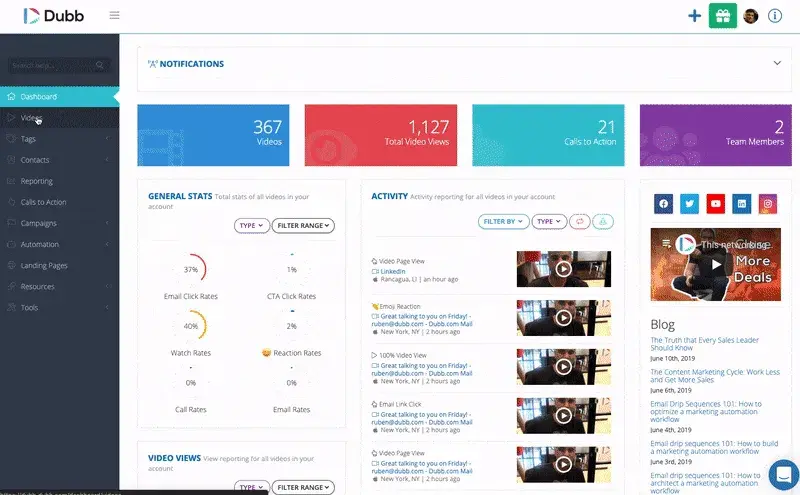
Dubb is the video sales operating system that gets you more connections, conversations, and conversions. The Dubb platform includes everything you need to make an impact in your sales and marketing, including video messaging, email/SMS campaigns, workflows, and a CRM add-on. Plus, with their mobile app, desktop app, Chrome Extension, and website dashboard, I can boost my sales from anywhere.
The professional plan is $42/month per user on the monthly plan.
6. trumpet
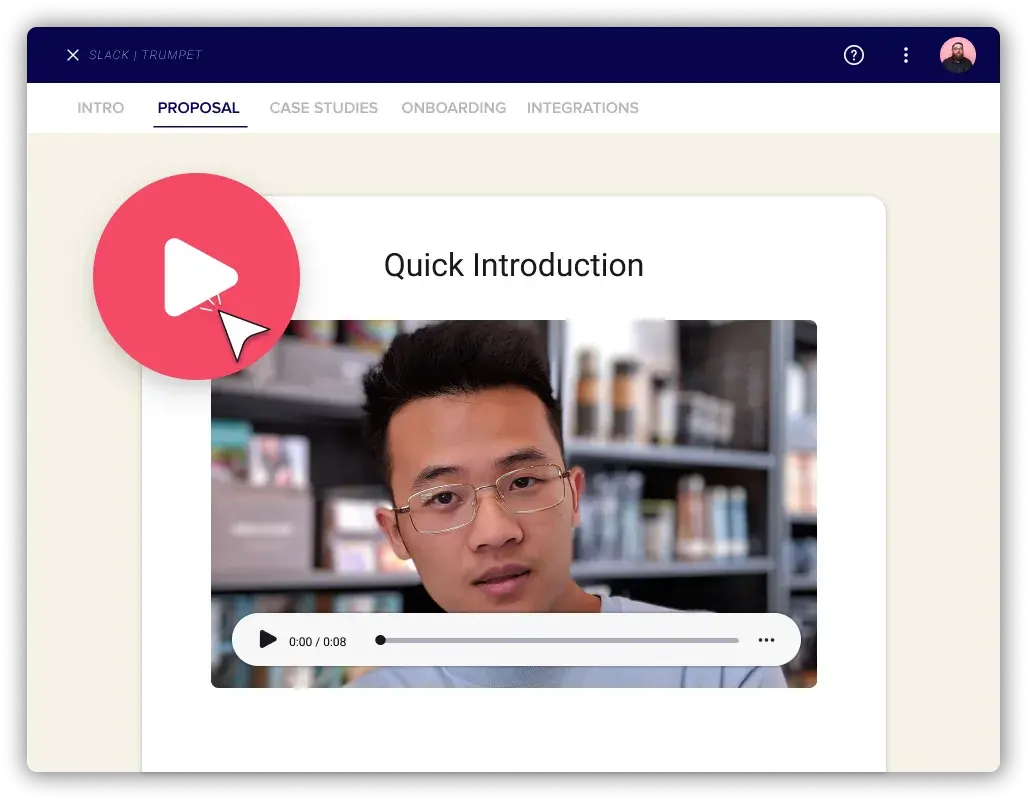
Trumpet is a digital sales room with video and screen recording built in. It’s great for putting a personal spin on your outreach, spicing up those post-demo recaps, and bringing your onboarding process to life using the built-in tool.
I‘ve used it for sending quick video messages for pre and post-meeting recaps, addressing customer queries with async videos, and creating easy-to-digest video messages that capture every detail of my deals. It’s also been fantastic for guiding buyers through video demos, pitches, and presentations.
Trumpet plans start at £29 per month when billed annually.
How I Make My Own Sale0s Videos
Since my work depends on clients knowing and trusting me, I need a tool that lets me record myself. That’s why I like Hippo Video because it can help me create sales messages that connect with my prospects.
Here’s what that process looks like:
1. Set up the recording environment.
When I first started creating sales videos, I quickly realized the environment matters just as much as the content. A clean, professional-looking background works wonders for maintaining a polished appearance.
In my case, I‘ve set up a dedicated corner in my home office with a plain wall behind me. I’ve also invested in good lighting — nothing fancy, just a simple ring light that ensures I'm well-lit and my facial expressions are clear.
Before I hit record, I always do a quick scan of what's visible in the frame and remove any distracting elements. This attention to detail really improves the quality of my videos.
2. Use the teleprompter feature.
One of my favorite features in Hippo Video is the built-in teleprompter. At first, I was hesitant to use it and feared that I might sound robotic. But with practice, I've found it incredibly helpful for staying on message without losing my natural delivery.
Hippo Video also gives you the option to generate scripts using AI. All you need to do is write a prompt.
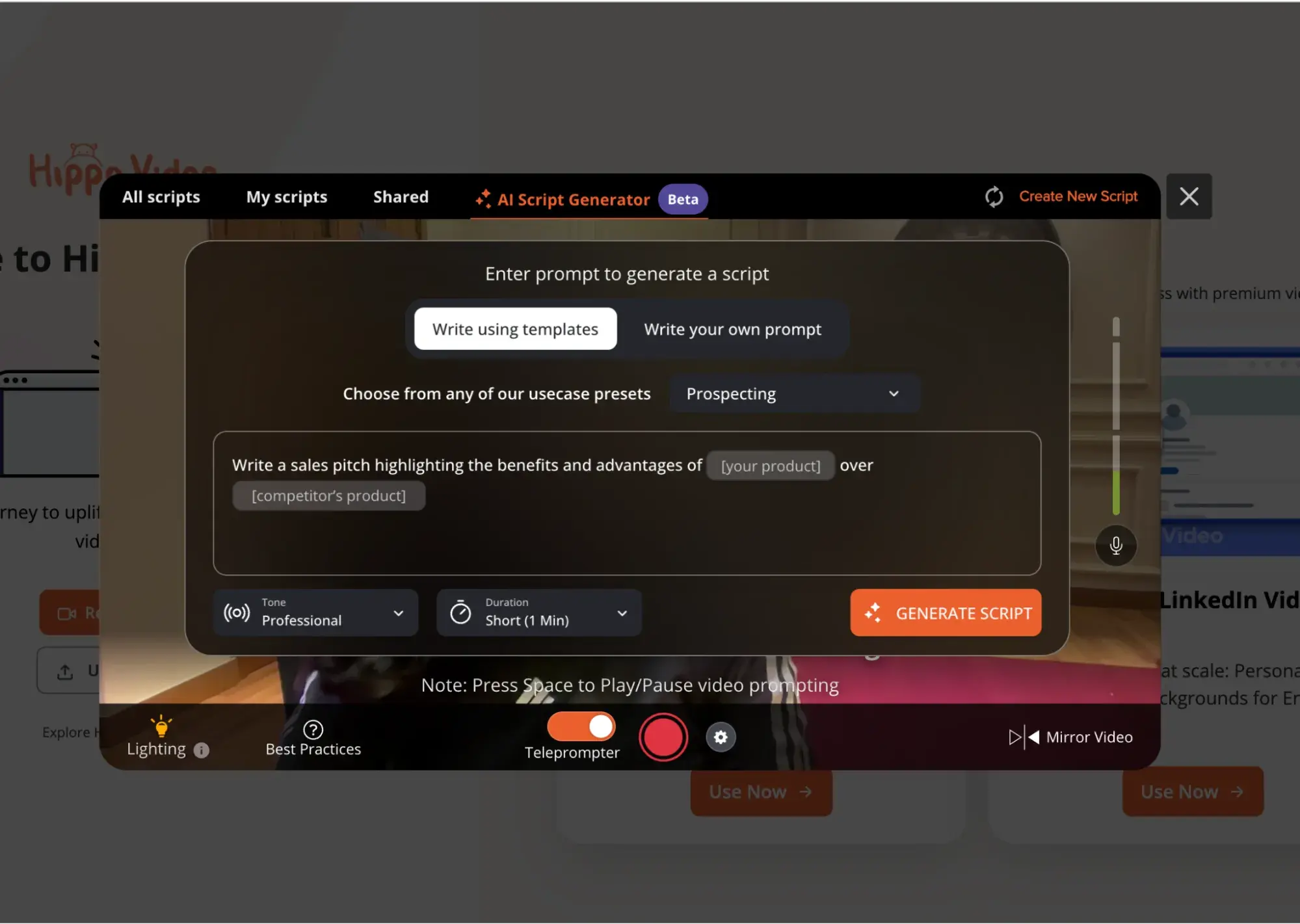
The output was a bit too AI-sounding for me though. I like having more control over what I’m saying.
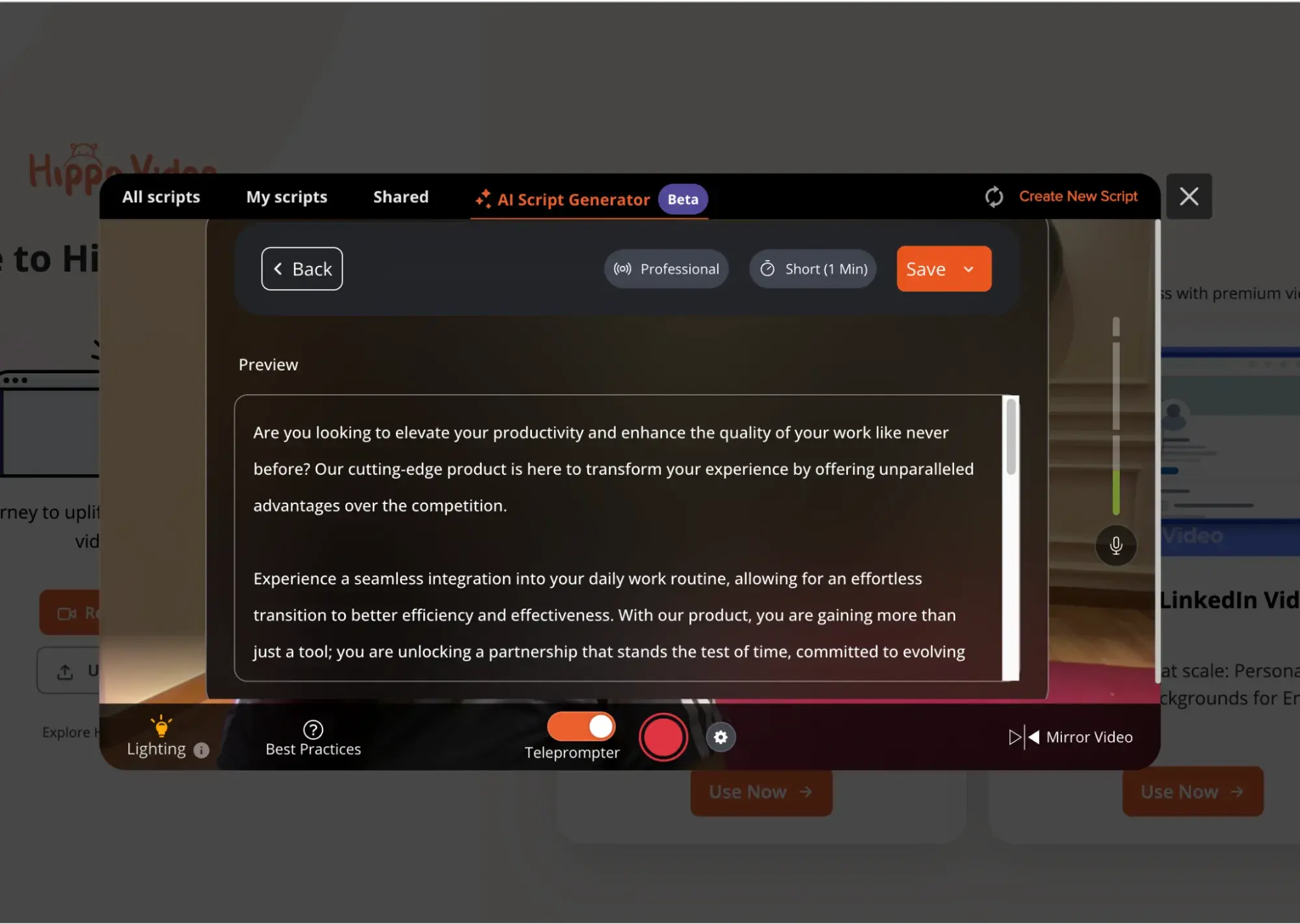
Instead, I typically write out my script beforehand and include personalization tokens like ${Prospect Name} and ${User.First Name}.
Then, I adjust the speed, text size, and line spacing in the teleprompter to match my natural speaking pace. This way, I can maintain eye contact with the camera while ensuring I hit all my key points. It's been a fantastic tool to keep my message consistent, while still sounding conversational and authentic.
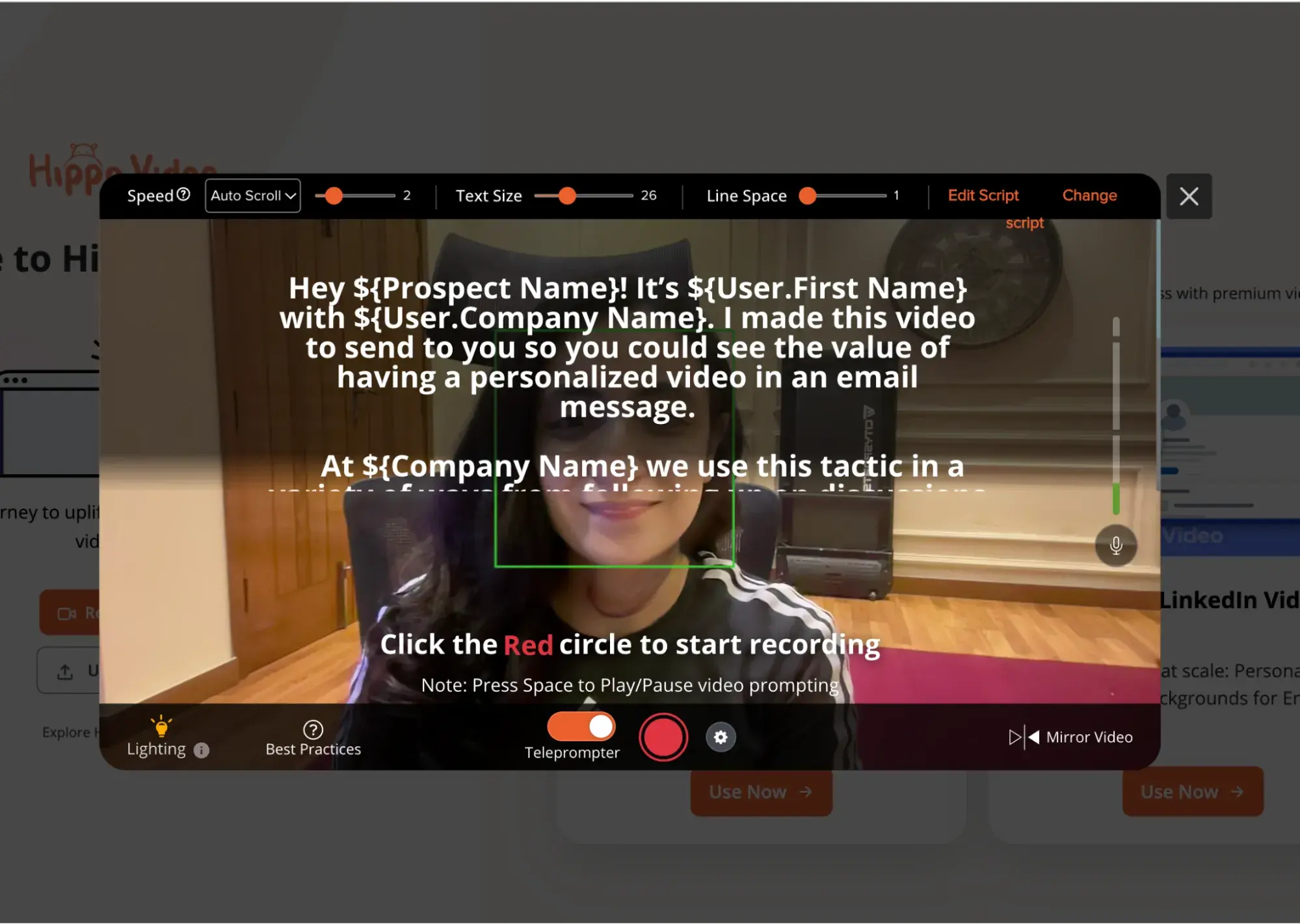
3. Record the video with confidence.
When it comes to actually recording my video, I‘ve developed a routine that helps me feel confident and prepared. I always start by taking a few deep breaths to center myself. Then, I remind myself of the main points I want to convey and the value I’m offering to my prospect.
When I‘m ready, I click that red circle button to start recording. I’ve learned to speak clearly and maintain eye contact with the camera, imagining I‘m talking directly to my prospect. One tip that’s helped me is to smile — it might feel a bit forced at first, but it comes across as warmth and enthusiasm in the video.
4. Refine my message.
After I finish recording, I take the time to review my video carefully. I watch it back, paying attention to my delivery, body language, and the clarity of my message. If needed, I use Hippo Video's trimming feature to tighten up the beginning or end.
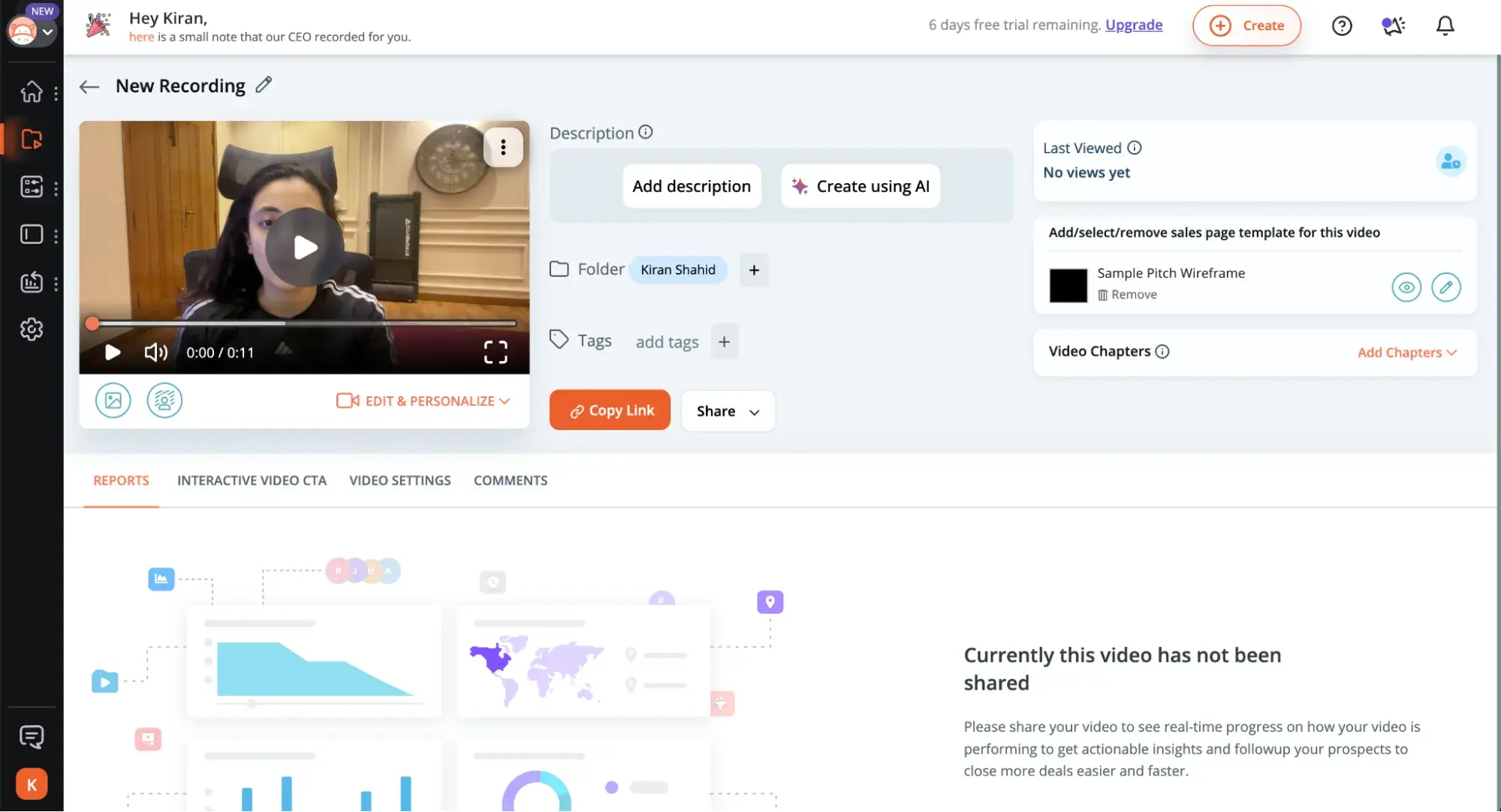
Sometimes, I realize I‘ve stumbled over a word or two, and in those cases, I’m not afraid to re-record. I've found that a little extra effort at this stage can make a big difference in how my prospects receive the video.
Once I‘m happy with the content, I add a description that summarizes the key points. Occasionally, I’ll use the AI-generated description feature as a starting point, then tweak it to match my voice and style.
5. Edit the video.
The editing process in Hippo Video has become one of my favorite parts of creating sales videos. The interface is intuitive and allows me to easily trim, cut, and rearrange clips as needed. I often find myself importing additional footage or screen recordings to complement my main video, which adds depth and variety to my presentations.
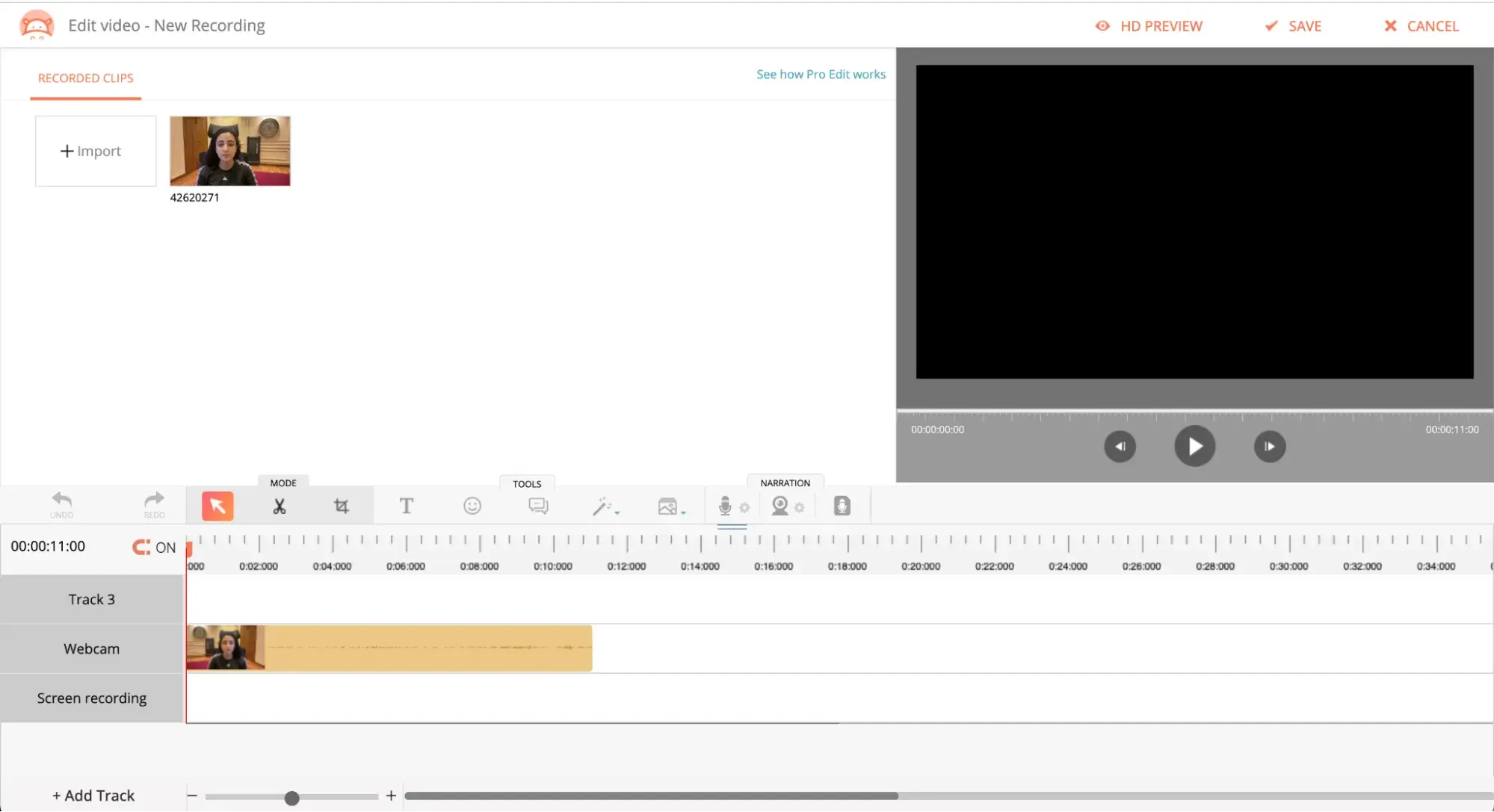
The timeline view also gives me a clear overview of my project and makes it simple to ensure perfect timing and pacing. I've learned to use different tools — like text overlays, emojis, and even drawing tools — to emphasize important points or add a touch of personality to my videos.
It's amazing how these editing tools have turned my amateur videos into polished, professional content that really connects with my prospects.
6. Add a CTA.
Hippo gives you options to add CTAs like in-video meeting links and embedding custom CRM forms. I've found the call-to-action feature especially useful — it helps me guide prospects smoothly to the next step in our sales process.
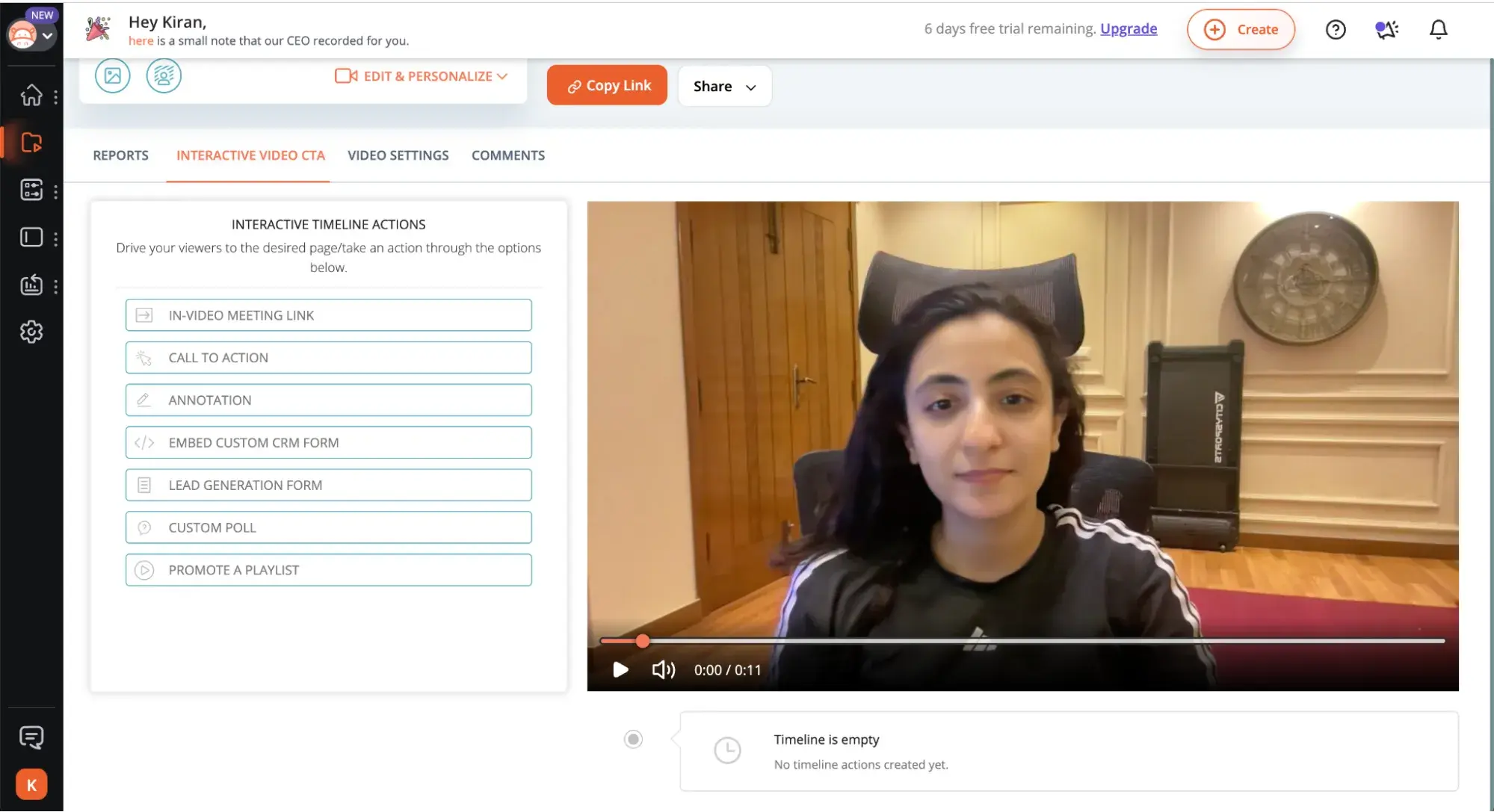
Another handy feature has been adding annotations to highlight key points or add context. The lead generation form has also been invaluable and lets me gather key info without pulling viewers away from the video. I'm still finding ways to use the custom poll feature, but I can already see its potential for quick feedback or audience preferences.
7. Share the video.
Once I'm happy with how the video looks and sounds, I share it with my prospects. Hippo Video makes this process incredibly smooth.
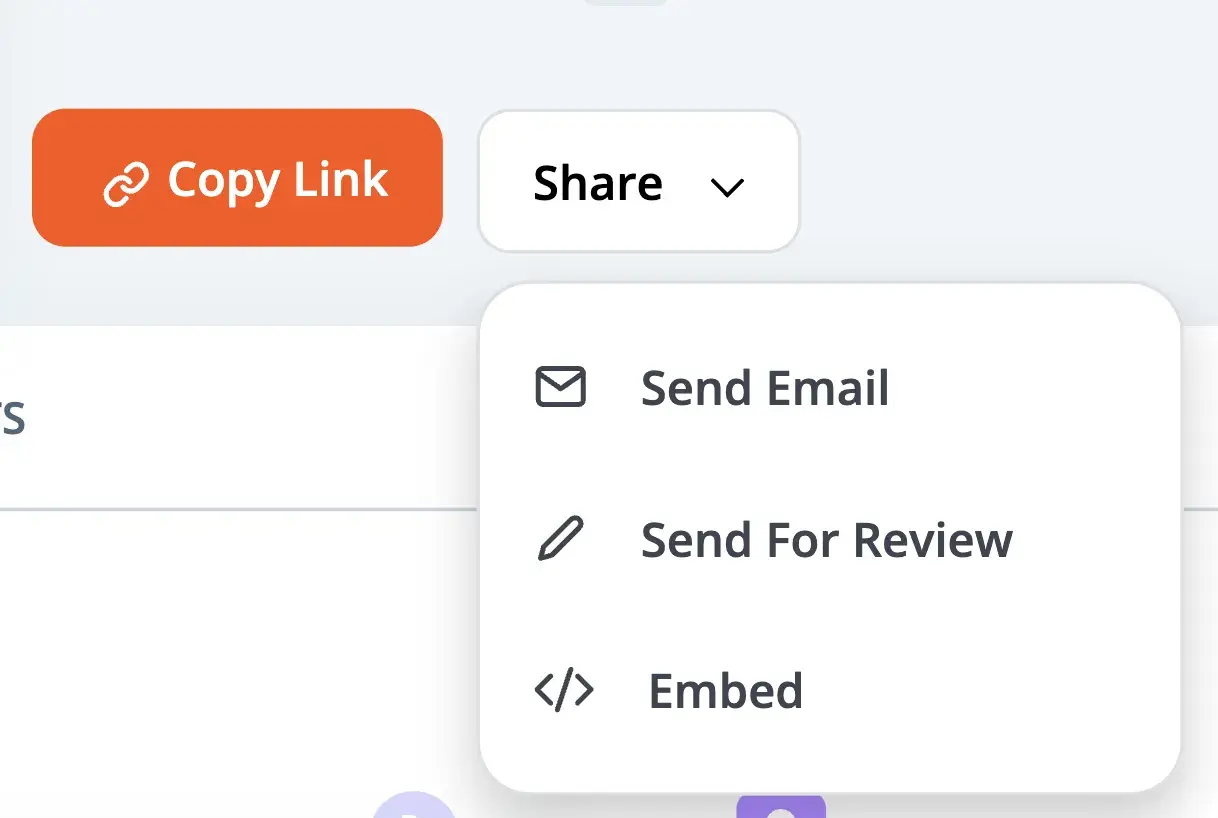
The “Copy Link” button has become my go-to for quick sharing — I can easily paste the link into a personalized message on LinkedIn or include it in a follow-up email. When I want to send the video directly via email, the “Send Email” option simplifies the process and allows me to compose my message without leaving the platform.
For collaborative projects or when I need input from my team, the “Send For Review” feature comes in handy. It allows me to gather feedback before finalizing the video.
Mixing up my sharing methods based on the recipient and context keeps my outreach fresh and engaging. Sometimes, a simple link works best, while other situations call for a more integrated approach with embedded videos.
Put Your Best Self Forward on Video
Working on this piece opened my eyes to the careful work that goes into even a short sales video. I was struck by how much preparation goes into each recording — from researching the prospect to scripting and refining the message.
Even though I could use AI scripts, I learned the value of creating my own content. This personal touch ensures authenticity and lets me tailor my message. Putting effort into thoughtful, well-researched videos really helps build meaningful connections. In the end, it’s this personal effort that turns a quick video into a lasting impression.
Editor's note: This post was originally published in April 2020 and has been updated for comprehensiveness.
